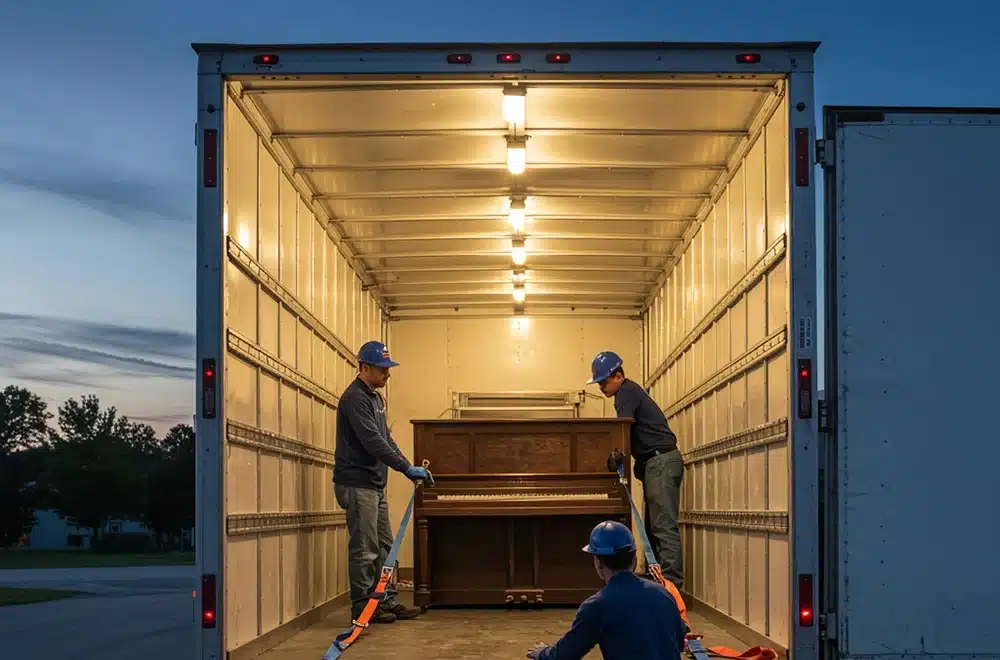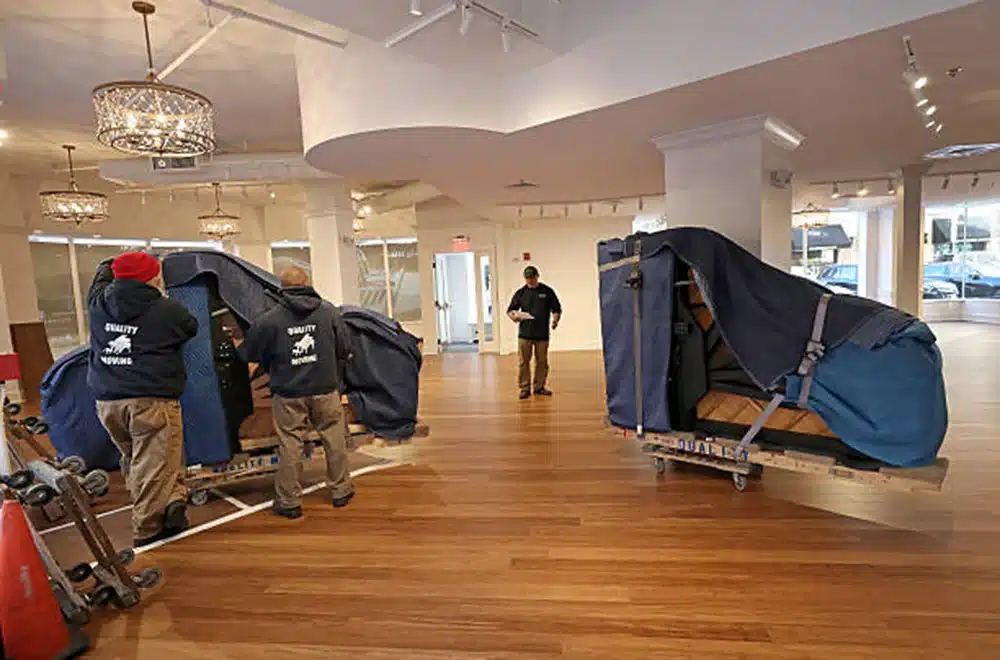When moving a cherished piano, the task is nothing short of challenging. It’s not merely about transporting an item; it’s about handling a valuable piece of art with intricate mechanics and emotional connections. That’s why, as professional piano movers, we prioritize understanding the risks involved and the meticulous preparations necessary to ensure a damage-free relocation.
Transporting a piano involves more than just wrapping it in protective blankets. It requires a comprehensive understanding of the instrument’s weight distribution, structural integrity, and sensitivity. In our years of experience, we’ve developed tried-and-tested methods to evaluate each piano’s unique needs before it moves an inch. This ensures that we provide the safest journey for your piano from door to door.
Understanding the Risks of Piano Transport
Transporting a piano isn’t as straightforward as moving other large furniture. Pianos are heavy and cumbersome and have internal mechanisms that are highly susceptible to damage if not handled correctly. These instruments can weigh anywhere from a few hundred to a thousand pounds, with their weight unevenly distributed. This uneven weight distribution makes them particularly tricky to maneuver, especially around tight corners or up and down stairs.
Additionally, the internal components of a piano, including strings, hammers, and the soundboard, are extremely sensitive. Vibrations, sudden bumps, or changes in temperature and humidity during transport can affect these parts, potentially leading to costly repairs. These factors underscore why opting for professional piano movers rather than a DIY approach is crucial. We understand these risks and are equipped to manage them, ensuring that the piano’s integrity is maintained throughout its journey.
Key Steps to Prepare Your Piano for Safe Transportation
Effective preparation is key to ensuring your piano’s safety during transport. Here are the steps we take to prepare your piano for its move:
1. Assessment:
First, we thoroughly assess your piano. This includes checking its condition, understanding its unique mechanisms, and planning the move based on its dimensions and the travel path.
2. Proper Wrapping and Padding:
We use specialized padding and wrapping materials designed to protect pianos. The padding protects the piano from bumps and scrapes, while the wrapping shields it from moisture and dust.
3. Secure Loading:
Loading the piano onto our transport vehicle involves precision. We use specialized equipment, like piano skids, for moving heavy instruments. These tools help us smoothly load the piano onto the truck without straining any part of the instrument.
4. Climate Control:
We maintain a climate-controlled environment within our transport vehicles. This is crucial in preventing damage from temperature changes or humidity, which can warp wood and affect the tuning.
By diligently following these steps, we ensure that every piano we move is protected, giving you peace of mind. These preparations mitigate the risks and pave the way for a safe and efficient move.
Best Practices for Piano Handling During the Move
Every move counts during a piano’s transit. We follow best practices to ensure that every phase of the move is handled with precision and care. It starts with the right team. Our movers are not only trained in generic moving techniques but are also experts in handling pianos. This specialization makes a significant difference, as they understand the nuances of piano balance and weight distribution.
Furthermore, we use the appropriate equipment to facilitate a smooth transition from your home to our transport vehicle. This includes specialized dollies and ramps designed for pianos. During the move, we secure the piano using straps that hold it in place, preventing any movement that could lead to damage. By sticking to these carefully crafted procedures, we minimize the risk of accidents, ensuring that your piano arrives in the same condition it left.
How We Ensure Your Piano’s Safety Post-Transport
Once we reach the destination, our commitment to your piano’s safety continues. Unloading and installing the piano involves a reverse process of our loading technique, with meticulous attention to detail. We carefully position your piano in its new location according to your specifications. After placement, we conducted a post-move inspection to ensure that no harm came to the piano during the move.
We also recommend a follow-up tuning. While we strive to maintain the condition of your piano, the slight shifts during transit could alter its tuning. Our team can arrange for a professional tuner to fine-tune your piano, ensuring that it sounds just as it did before—or even better.
Navigating Successful Piano Moves
Successfully moving a piano requires not only physical handling but also an understanding of the emotional and financial value of your instrument. We take pride in our work and the knowledge that we contribute to the continuing musical journeys of our clients. Our dedication is reflected in every step we take, from initial consultation to post-move care.
Should you need your piano moved, trust in the expertise and care of Piano Movers of Houston. Give us a call today, and let us make your piano moving experience as harmonious as the music you love.
Related Posts

Preparing Your Piano for a Move: What Professionals Do Before It Leaves

Move Your Piano in a Climate-Controlled Transport: Why It Matters
